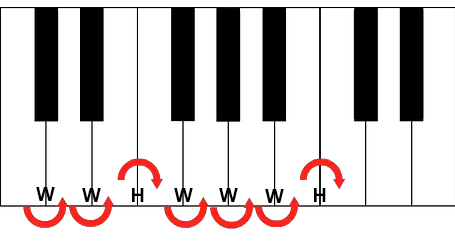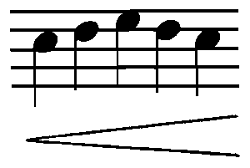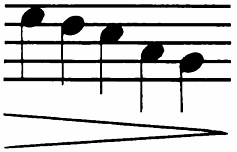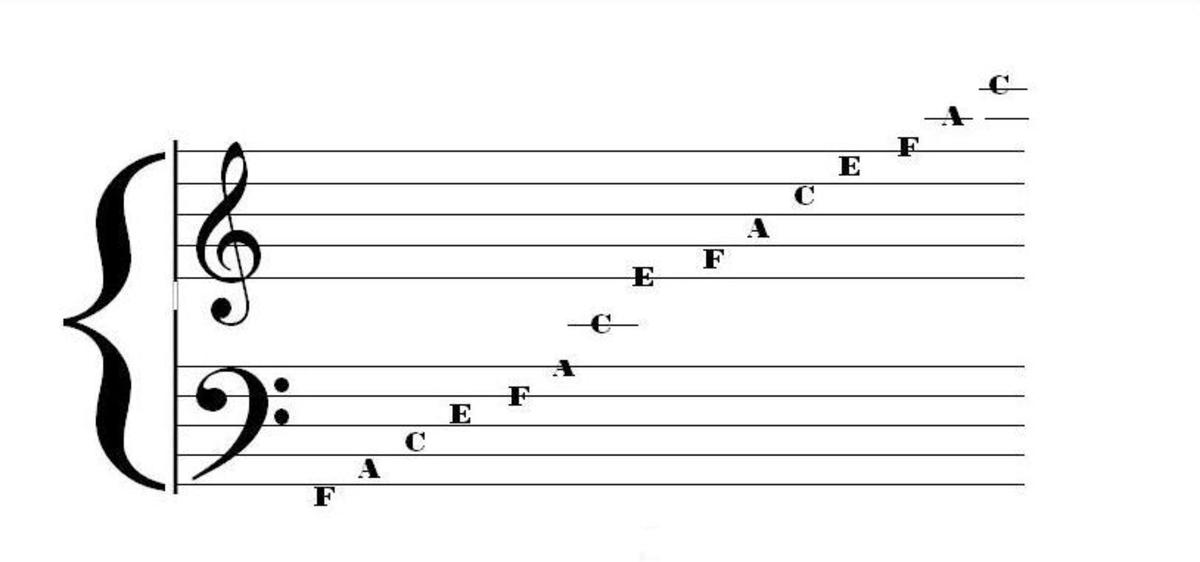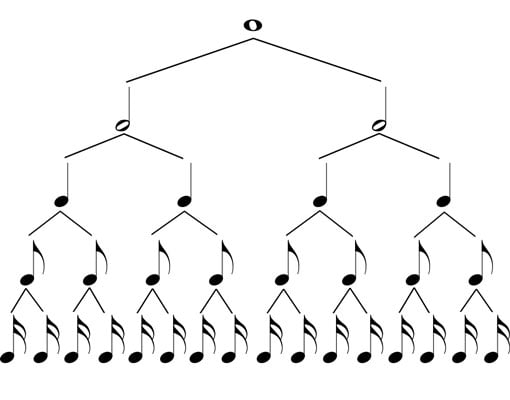The chord grind continues. Today, we’ll discuss more seventh chords, suspended chords, upper extensions, and lead sheet notation.
First up, the minor-major seventh chord: a minor triad with a major seventh on top.

There are also augmented seventh chords. The augmented major seventh chord is an augmented triad with a major seventh on top. The augmented seventh chord is an augmented triad with a minor seventh on top.

Note: Augmented seventh is on the left; major augmented seventh is on the right.
Onto suspended chords (favorite of Joni Mitchell)! A suspended triad replaces the third with the second or fourth interval. These are referred to as a suspended second and suspended fourth.

Note: P4 and P5 refer to perfect fourth and fifth intervals.
Seconds and fourths, as well as sixths for that matter, can be also be added to a triad without removing the third. This is no longer a suspended chord, but is on its way to becoming a cluster chord.
Alright jazz people–time for upper extensions.
Up until now, we have only explored intervals within one octave. However, ninth, eleventh, and thirteenth intervals also exist, primarily in jazz music. These share the same pitches as the second, fourth, and sixth, respectively, but in the next octave up. (The upper extensions stop at 13 because the 15 is equivalent to the root.) Upper extensions are utilized to give chords enhanced color and texture. The image below shows how extended chords are built on the major seventh, minor seventh, and dominant seventh chords:

These upper extensions can also be altered (made flat or sharp), further expanding the possibilities. The chart below should be helpful in understanding how each interval functions:

Before we go any farther, we should clarify what these symbols mean that represent chords.
On lead sheets–sheets of music outlining the chords of a song–chords are notated first with the letter of their root note (and possibly a flat or sharp). Numbers represent the degree of the scale from the root (2, 4, 5, 6, 7, 9, 11, 13) of the note that will be added to the triad. “M” or “maj” represents major, “m” or “-” represents minor. A triangle represents a major seventh. A circle represents a diminished seventh. A circle with a diagonal line through the center represents half-diminished. “+” and “aug” represent augmented. “dim” represents diminished. “sus” represents suspended. The sharp or flat symbol before a number indicates that the note at that interval is sharp or flat.
Yikes, that was a lot. Let’s look at an example–the lead sheet for “Autumn Leaves,” a classic jazz standard:

Let’s go through the first couple of chords of the tune. First is A-7, which is an A minor seventh chord (A C E G). Next is D7, a D dominant seventh chord (D F# A G). After that comes G triangle and C triangle, which is G major seventh chord (G B D F#) and C major seventh chord (C E G B). Next is F# circle with slash, which is an F# half-diminished chord (F# A C E). Later in the tune, we see a B7b9, which is a B dominant seventh flat nine chord (B D# F# A C).
Hopefully, this is beginning to make sense. Now that we are familiar with the plethora of chords at our fingertips and how they are written on a lead sheet, we can begin to analyze their function as we discuss chord progressions next week. See you then!







